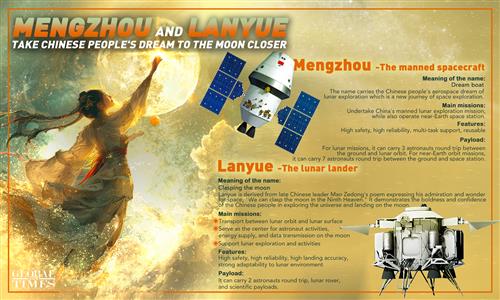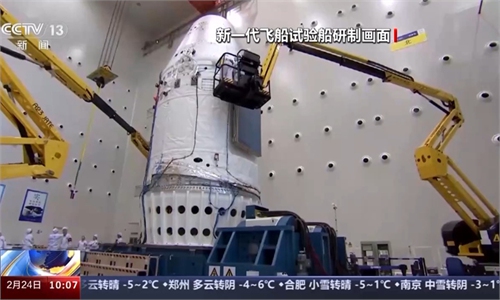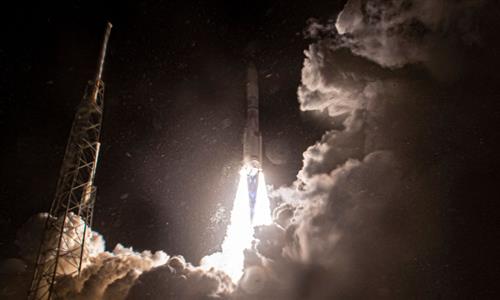Queqiao-2 relay satellite mission a complete success, capable of providing service for future lunar exploration: CNSA

The Queqiao-2 relay satellite successfully separates from the launch rocket, with the solar wings and communication antennas unfolded smoothly. The Tiandu test satellite is visible on the left side of the image. Photo: CNSA
China National Space Administration (CNSA) announced on Friday that Queqiao-2 relay satellite mission completed in-orbit communication tests and it has been a complete success. The satellite is capable of providing relay communication services for the fourth phase of the lunar exploration project and subsequent domestic and international lunar exploration missions.
After being launched into space on March 20, Queqiao-2 relay satellite underwent mid-course corrections, lunar braking, and circumlunar orbit maneuvers. It entered a 24-hour period elliptical mission orbit around the moon as planned on April 2, according to a release from the CNSA.
On April 6, Queqiao-2 successfully completed a communication test with Chang'e-4 probe, which is conducting an exploration mission on the far side of the moon. From April 8 to 9, Queqiao-2 also conducted communication tests with the Chang'e-6 probe.
The Tiandu-1 and Tiandu-2 communication and navigation technology experiment satellites, which were launched concurrently, entered circumlunar mission orbits on March 29 and successfully separated on April 3, beginning a series of communication and navigation technology verifications.
Queqiao-2 relay satellite and the Tiandu satellites use a circumlunar elliptical frozen orbit as their mission orbit. Since the moon's shape is irregular, spacecraft flying close to the moon are affected by lunar gravity and other factors, causing potential orbital deviations. The circumlunar elliptical frozen orbit is a stable orbit that minimizes deviations for the spacecraft flying in it.
The CNSA listed several favorable reasons for choosing a circumlunar elliptical frozen orbit for Queqiao-2's mission. Compared to Queqiao-1, Queqiao-2's mission orbit is closer to the moon, resulting in a significant boost in data transmission communication rates. Moreover, a circumlunar elliptical frozen orbit improves coverage of lunar south pole communications and help conserve satellite fuel, allowing Queqiao-2 to remain in its orbit for an extended period with minimal fuel usage.
Queqiao-2 relay satellite will provide relay communication services for the Chang'e-4 mission and the upcoming Chang'e-6 mission as planned, and will carry out corresponding scientific explorations when appropriate, the CNSA said in the release.
Global Times



